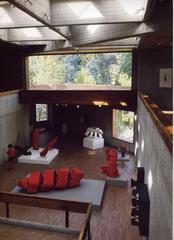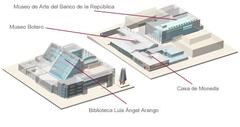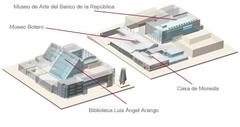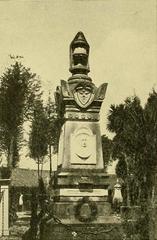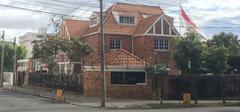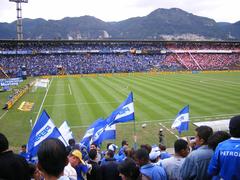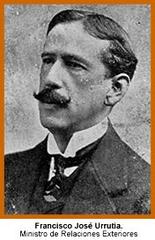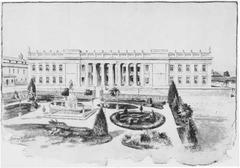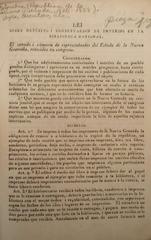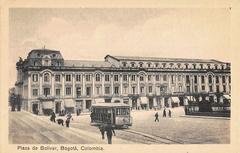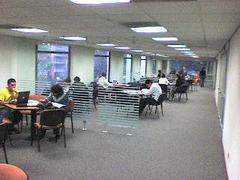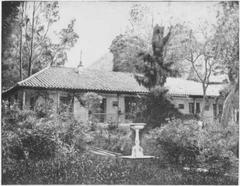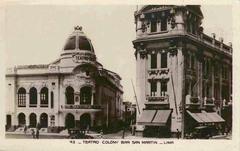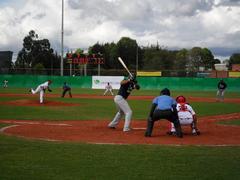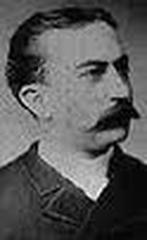Hospital San Juan de Dios Bogotá: Visiting Hours, Tickets, and Historical Significance
Date: 04/07/2025
Introduction
Hospital San Juan de Dios in Bogotá is not only one of Colombia’s oldest medical institutions but also a remarkable testament to the nation’s evolution in healthcare, architecture, and social welfare. Established in 1564, it has served generations of Bogotá’s residents—initially as a charitable hospital for Spanish settlers, Indigenous peoples, and marginalized communities. Over the centuries, the hospital has grown from modest colonial beginnings into a sprawling complex representing colonial, neoclassical, and modernist architecture, and has played a pivotal role in Colombian medical education and innovation.
In recent years, Hospital San Juan de Dios has become the focus of significant restoration and redevelopment efforts, aiming to preserve its historical integrity while transforming it into a dynamic center for culture, education, and public engagement. Today, visitors can explore its storied past through guided tours, exhibitions, and cultural events, making it an essential stop for anyone interested in Bogotá’s rich heritage. This guide details visiting hours, ticketing, accessibility, nearby attractions, and practical tips to enhance your experience at one of Bogotá’s most iconic historical sites (mincultura.gov.co, bogota.gov.co, Wikipedia).
Table of Contents
- Introduction
- Origins and Early History
- Academic Integration and Modernization
- Architectural Evolution
- Medical and Cultural Impact
- Visiting Information: Hours, Tickets, and Tours
- Accessibility and Visitor Experience
- Nearby Attractions and Urban Context
- Restoration Progress and Future Prospects
- Frequently Asked Questions (FAQ)
- Conclusion
- References
Origins and Early History
Founded in 1564, Hospital San Juan de Dios originated as Hospital de San Pedro, created to address the health needs of Bogotá’s colonial society. The hospital’s foundation was a direct response to royal decrees from King Charles V, aiming to provide medical care to settlers, Indigenous communities, and other vulnerable groups. Managed by religious orders such as the Dominicans, Franciscans, and later the Order of San Juan de Dios, it functioned as both a charitable and spiritual institution, embodying the philanthropic values of the era (scielosp.org).
By the 18th century, the institution was officially named Hospital San Juan de Dios and relocated to accommodate Bogotá’s growing population, setting the stage for its expansion and enduring influence.
Academic Integration and Modernization
The 19th century marked a turning point as the hospital became affiliated with the Universidad Nacional de Colombia’s Faculty of Medicine in 1868. This partnership accelerated its transformation into a modern public hospital, introducing advanced medical practices and expanding its educational mission. Hospital San Juan de Dios played a seminal role in training generations of Colombian physicians, nurses, and healthcare professionals (Wikipedia).
Architectural Evolution
Spanning 13 hectares, the hospital complex showcases more than 20 buildings constructed over several centuries. The earliest structures display colonial adobe and tile features, while 19th-century expansions brought neoclassical facades and grand pavilions. The 20th century introduced modernist influences, most notably in the Torre Central (1948–1952), which utilized innovative engineering techniques such as the “sistema reticular celulado.”
Recent restoration efforts have revitalized key buildings like the 1926 Edificio Mantenimiento and integrated modern facilities, including simulation labs and telemedicine centers, all while preserving the site’s historical character (issuu.com).
Medical and Cultural Impact
Hospital San Juan de Dios has been at the forefront of Colombian medical innovation. It hosted the country’s first medical school, pioneered the Kangaroo Mother Care method for premature infants, and was the site of the world’s first synthetic malaria vaccine. The hospital also housed specialized institutes, such as the Instituto Materno Infantil and the Instituto Inmunológico Nacional, and contributed to mental health care through the Salud Mental pavilion (mincultura.gov.co).
Declared a National Monument in 2002, it continues to inspire new generations through exhibitions, oral histories, and community events that honor its legacy (Wikipedia).
Visiting Information: Hours, Tickets, and Tours
Visiting Hours
- Current Schedule: Guided tours are generally available on Fridays and Saturdays from 9:00 AM to 5:00 PM. Additional tours may be offered during cultural events or special occasions. As restoration progresses, hours and access may change—always check the latest updates on official city portals.
Tickets and Reservations
- Cost: Admission is free, but prior registration is required due to limited group sizes.
- Booking: Reserve your spot via the Bogotá District’s official tourism website or onsite at the visitor center.
Guided Tours and Special Events
- Themes: Tours explore the hospital’s architectural evolution, medical milestones, and cultural significance.
- Events: The site regularly hosts exhibitions, educational workshops, and art installations—such as the “Resurgir” exhibit featuring works inspired by the hospital’s past and future (bogota.gov.co).
Accessibility and Visitor Experience
- Mobility: Wheelchair ramps and elevators have been added in restored areas, increasing accessibility.
- Facilities: Restrooms, information desks, and interpretive signage are available in main visitor zones.
- Tips: Wear comfortable shoes for extensive walking. Photography is allowed in most areas, but be mindful of ongoing work and posted restrictions.
- Safety: The hospital is centrally located and accessible via TransMilenio and bus routes. Standard urban safety precautions are advised (Xixerone).
Nearby Attractions and Urban Context
Hospital San Juan de Dios is strategically positioned in Bogotá’s city center. Enhance your visit by exploring:
- Plaza de Bolívar: The city’s historic main square.
- Museo del Oro: Renowned museum of pre-Columbian gold artifacts.
- Botero Museum: Home to works by famed Colombian artist Fernando Botero.
- La Candelaria: Bogotá’s colonial district, offering vibrant culture and architecture.
The hospital connects easily to these sites, making it part of a rich cultural itinerary (My Global Viewpoint).
Restoration Progress and Future Prospects
Restoration Challenges
- Legal and Administrative: Ongoing disputes—such as with the Spanish firm Copasa—have delayed restoration, particularly of the Torre Central.
- Ownership and Oversight: Multiple stakeholders (Ministry of Culture, Ministry of Health, city government, Universidad Nacional) ensure comprehensive but complex project governance.
- Technical Demands: Restoration involves seismic retrofitting, structural reinforcement, and careful conservation of original materials.
Forward-Looking Vision
- Innovation: The hospital aims to become a leading university hospital, with new simulation and telemedicine centers.
- Community Impact: Restoration is expected to spur urban renewal, create jobs, and provide a unique venue for health education and cultural engagement.
Frequently Asked Questions (FAQ)
Q: What are the visiting hours for Hospital San Juan de Dios?
A: Guided tours are generally offered Fridays and Saturdays from 9:00 AM to 5:00 PM; always confirm current availability on official channels.
Q: Do I need to buy tickets?
A: Admission is free, but advance booking is required due to capacity limits.
Q: Is the site wheelchair accessible?
A: Yes, restored areas feature ramps and elevators.
Q: What should I bring?
A: Comfortable shoes, layered clothing, and a camera; be prepared for Bogotá’s cool and variable climate.
Q: What nearby attractions should I consider?
A: Plaza de Bolívar, Museo del Oro, Botero Museum, and La Candelaria are all within easy reach.
Conclusion
Hospital San Juan de Dios stands as a living monument to Bogotá’s past and a beacon for its future. Its layered architecture, medical innovations, and ongoing restoration efforts reflect the city’s dynamic blend of tradition and progress. Visitors are encouraged to plan ahead by booking guided tours, exploring nearby cultural landmarks, and engaging with the hospital’s evolving story through exhibitions and community initiatives.
For up-to-date visiting information, restoration news, and event schedules, consult the official Bogotá tourism website, Universidad Nacional de Colombia, and the Ministry of Culture’s portal.
Download the Audiala app for audio guides, interactive maps, and exclusive content to enrich your visit to Bogotá’s historical sites, including Hospital San Juan de Dios.
References
- Visiting Hospital San Juan de Dios in Bogotá: History, Tickets, and Travel Tips, 2025, Colombian Ministry of Culture (mincultura.gov.co)
- Bogotá City Government: Hospital San Juan de Dios Restoration Updates, 2025 (bogota.gov.co)
- Hospital San Juan de Dios, Bogotá - Wikipedia, 2025 (Wikipedia)
- Visiting Hospital San Juan de Dios in Bogotá: Hours, Tickets, History, and Tours, 2025, Bogotá District Portal (bogota.gov.co)


